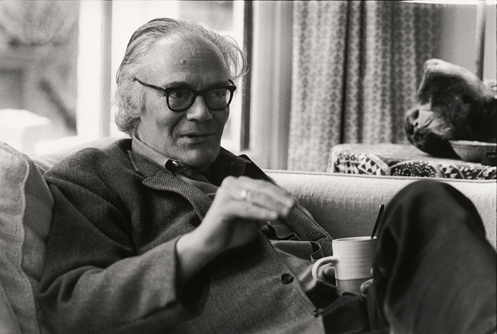Robert Lowell 1917–1977
Judith Aronson (born 1942) Gelatin silver print, 1977 (printed c. 1993)

National Portrait Gallery, Smithsonian Institution; gift of Judith Aronson
Robert Lowell’s family was descended from Puritans, and he developed a sense of ironic distance on his past to make himself into America’s foremost history poet. Lowell reflected on his Puritan inheritance more deeply than anyone since Nathaniel Hawthorne. His vision was dark; he maintained that behind the American character stood the figures of the Devil and Captain Ahab. A sense of obsession and agony fills many of his poems; in his account of Jonathan Edwards, “After the Surprising Conversions,” he writes, “God / Abandoned us to Satan, and he pressed / Us hard. . . . / Content was gone. / All the good work was quashed. We were undone.” The weight of Lowell’s inheritance (plus his fragile emotional state) did not break him. Instead, throughout the 1950s his writing loosened up, and his work became more intimate and personal. This transition spawned the idea of “confessional” verse, a style that increasingly fit the temper of the times.
I have sat and listened to too many words of the collaborating muse, and plotted perhaps too freely with my life, not avoiding injury to others, not avoiding injury to myself— to ask compassion Robert Lowell From “Dolphin,” 1973
